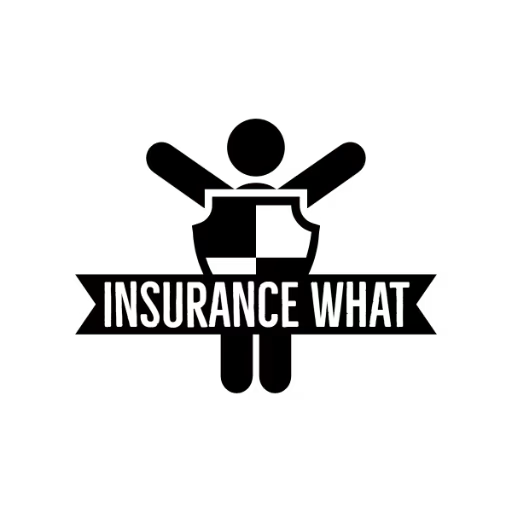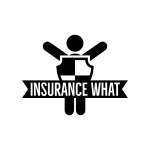Many terms in the insurance world are not widely known or understood by ordinary people. Even though this is important so that they can understand when buying insurance products and can choose insurance that suits their needs.
For those of you who want to take out insurance or plan to buy insurance. Understanding insurance terms is something that cannot be underestimated.
Generally, a number of terms in insurance use English, but some use loanwords. All terms in the insurance can be found in the handbook provided by the insurance provider/company to policyholders.
But you don’t need to worry about this first. For those of you who don’t know much or don’t have enough time to study policiesPolicy The policy is a binding agreement and is agreed upon by the insurance company and policyholder in writing. An agreement made by the policyholder with an insurance company., here is a summary from InsuranceWhat.com about common terms in insurance that are important to know and their definitions.

Read Also
A-Z Insurance Terms You Need To Know
| Terms | Definitions |
|---|---|
| AgentAgent People who work and are tied to insurance companies to find and serve policyholders. Insurance company employees who are tasked with marketing products or serving prospective customers, starting from submitting the policy provisions to the contents of the policy agreement after becoming a policyholder. | Insurance company employees who are tasked with marketing products or serving prospective customers, starting from submitting the policyPolicy The policy is a binding agreement and is agreed upon by the insurance company and policyholder in writing. An agreement made by the policyholder with an insurance company. provisions to the contents of the policy agreement after becoming a policyholder. |
| ActuarialActuarial Science in insurance that applies mathematical, financial, and statistical methods to estimate or calculate risk. | Science in insurance that applies mathematical, financial, and statistical methods to estimate or calculate riskRisk Risk is a loss that occurs to the insured individual or object. Various bad possibilities could happen to someone.. |
| HeirHeir The name of the person listed in the insurance policy as the party receiving compensation in the event of death to the Insured. | The name of the person listed in the insurance policyInsurance policy An agreement between the policyholder and the insurance company to perform the obligations as agreed by both parties. as the party receiving compensation in the event of death to the InsuredInsured A person who is legally listed in the insurance policy to receive benefits from the policy. A person whose life/health is covered in accordance with an insurance agreement or contract.. |
| AdjudicationAdjudication The dispute settlement stage is to make a decision whether the claim submitted by the policyholder must be accepted or rejected by the insurance company. | The dispute settlement stage is to make a decision whether the claim submitted by the policyholder must be accepted or rejected by the insurance company. |
| AnnuityAnnuity A series of payments within a specified time provided by the insurance company to the annuity policyholder. Payments made by the insurance company periodically for a certain time. | Payments made by the insurance company periodically for a certain time. |
| AssignmentAssignment The term used to describe a transfer in insurance. | The term used to describe a transfer in insurance. |
| AssignorAssignor The party who assigns insurance rights and benefits from policyholders to other people. | The party who assigns insurance rights and benefits from policyholders to other people. |
| Automatic Premium LoanAutomatic Premium Loan Provision for automatic cash value withdrawal from the policy if the customer has not paid the premium until the grace period ends. (APLAutomatic Premium Loan Provision for automatic cash value withdrawal from the policy if the customer has not paid the premium until the grace period ends.) | Provision for automatic cash valueCash Value Total money was given by the insurance company to policyholders (cash value). withdrawal from the policy if the customer has not paid the premiumPremium The money that must be paid at a certain time is the obligation of the insurance policyholder. The amount of premium paid is determined by the policy and approval of the insurance company in accordance with the conditions of the insured. The nominal payment approved by policyholders and insurance companies. Premium payment will be made according to the agreement, it can be monthly, yearly, or according to the agreement. until the grace periodGrace period The time period after the premium due date where the premium can still be paid without being subject to interest and the policy can still be accounted for. The term used to describe the grace period given to policyholders for 30 days from the due date of payment. The deadline was given by the insurance company to the policyholder to pay the agreed premium. ends. |
| BancassuranceBancassurance The distribution method of insurance sales in which the bank acts as a distributor where the target customer is the customer of the bank. Usually, the services provided are a combination of banking and insurance services. Insurance products offered and sold through banks and the target audience are bank customers. | Insurance products offered and sold through banks and the target audience are bank customers. |
| Cut LimitCut Limit Costs that must be incurred by policyholders to cover the shortage of costs paid by the insurance company to the hospital. | Costs that must be incurred by policyholders to cover the shortage of costs paid by the insurance company to the hospital. |
| Acquisition FeeAcquisition Fee Costs incurred when issuing the policy. | Costs incurred when issuing the policy. |
| Top-Up FeeTop-Up Fee Costs incurred when paying periodic premiums and single premiums. | Costs incurred when paying periodic premiumsPremium The money that must be paid at a certain time is the obligation of the insurance policyholder. The amount of premium paid is determined by the policy and approval of the insurance company in accordance with the conditions of the insured. The nominal payment approved by policyholders and insurance companies. Premium payment will be made according to the agreement, it can be monthly, yearly, or according to the agreement. and single premiums. |
| Cash Value | Total money was given by the insurance company to policyholders (cash value). |
| Contestable PeriodContestable Period Time is given to the insurer to cancel the policy. | Time is given to the insurerInsurer A person who is legally listed in the insurance policy to make premium payments for that policy. to cancel the policy. |
| Premium leavePremium leave A feature in insurance that customers can use if they want to stop paying premiums temporarily. | A feature in insurance that customers can use if they want to stop paying premiums temporarily. |
| Investment FundInvestment Fund The amount of funds obtained from the premium payment has been deducted by the acquisition cost and several other costs. | The amount of funds obtained from the premium payment has been deducted by the acquisition cost and several other costs. |
| Endowment PlanEndowment Plan Insurance program with two benefits: protection and savings. | Insurance program with two benefits: protection and savings. |
| Explanation Of BenefitsExplanation Of Benefits A letter from the insurance company as a sign of acceptance of a claim given to the policyholder. (EOBExplanation Of Benefits A letter from the insurance company as a sign of acceptance of a claim given to the policyholder.) | A letter from the insurance company as a sign of acceptance of a claimClaim The demands are given by the insurance policyholder to get the right properly so that the insurer pays the conditions according to the existing procedure. given to the policyholder. |
| Underwriting FieldUnderwriting Field The initial selection by the insurance company. | The initial selection by the insurance company. |
| Flat RateFlat Rate The monthly premium fee determined by the insurance company is the same nominal for each pay period during the contract period. | The monthly premium fee determined by the insurance company is the same nominal for each pay period during the contract period. |
| Free-Look PeriodFree-Look Period Policyholders get 14 days to decide on cooperation / cancel the policy because they do not agree with the terms and conditions in the policy. | Policyholders get 14 days to decide on cooperation / cancel the policy because they do not agree with the terms and conditions in the policy. |
| Grace Period | The term used to describe the grace period given to policyholders for 30 days from the due date of payment. |
| Unit priceUnit price The results obtained from the investment portfolio are obtained from the value of assets plus the profits obtained from the investment returns. | The results obtained from the investment portfolio are obtained from the value of assets plus the profits obtained from the investment returns. |
| Policy IllustrationPolicy Illustration Projections of insurance benefits received by policyholders. | Projections of insurance benefits received by policyholders. |
| Investment-linked PlanInvestment-linked Plan A term that refers to unit-linked insurance that offers protection and investment benefits. | A term that refers to unit-linked insurance that offers protection and investment benefits. |
| Protection GuaranteeProtection Guarantee One of the guarantees provided by the insurance company is that policyholders can buy additional insurance products without the need for a selection process. | One of the guaranteesWarranty Statement A statement issued by a potential customer regarding the condition of the person or thing insured. provided by the insurance company is that policyholders can buy additional insurance products without the need for a selection process. |
| Guarantee / Warranty StatementWarranty Statement A statement issued by a potential customer regarding the condition of the person or thing insured. | A statement issued by a potential customer regarding the condition of the person or thing insuredInsured A person who is legally listed in the insurance policy to receive benefits from the policy. A person whose life/health is covered in accordance with an insurance agreement or contract.. |
| Joint life annuityJoint life annuity Payments made will stop when the insured party dies. | Payments made will stop when the insured party dies. |
| Key EmployeeKey Employee Experts owned by insurance companies with all the abilities that support the success of the insurance company. (Key PersonKey Employee Experts owned by insurance companies with all the abilities that support the success of the insurance company.) | Experts owned by insurance companies with all the abilities that support the success of the insurance company. |
| Claim | The demands are given by the insurance policyholder to get the right properly so that the insurer pays the conditions according to the existing procedure. |
| End of Contract ClaimsEnd of Contract Claims The policy holder’s claim because the contract has ended with the insurance company. | The policy holderPolicy Holder The person who bound by an agreement made with the insurance company and is responsible for all obligations to the insurance company.’s claim because the contract has ended with the insurance company. |
| Pending ClaimsPending Claims Claims made by policyholders and not being able to be paid by the insurance company for some reason. | ClaimsClaim The demands are given by the insurance policyholder to get the right properly so that the insurer pays the conditions according to the existing procedure. made by policyholders and not being able to be paid by the insurance company for some reason. |
| ClauseClause The articles contained in the policy agreement that policyholders and insurance companies must comply with. | The articles contained in the policy agreement that policyholders and insurance companies must comply with. |
| LapseLapse Premiums that are not paid beyond the grace period can invalidate the policy (the effective period of the policy stops). | Premiums that are not paid beyond the grace period can invalidate the policy (the effective period of the policy stops). |
| Life Insurance CompanyLife Insurance Company An insurance company that has an insurance product to accept the transfer of life-related risks (economic value and the insured). | An insurance company that has an insurance product to accept the transfer of life-related risksRisk Risk is a loss that occurs to the insured individual or object. Various bad possibilities could happen to someone. (economic value and the insured). |
| Loan of PolicyLoan of Policy If the policyholder asks for a loan from the insurance company in a certain amount and agrees with the policy’s cash value guarantee. | If the policyholder asks for a loan from the insurance company in a certain amount and is agreed with the cash value guaranteeWarranty Statement A statement issued by a potential customer regarding the condition of the person or thing insured. of the policy. |
| Late Remittance OfferLate Remittance Offer The final offer from the insurance company is used to recover canceled customer policies. | The final offer from the insurance company is used to recover canceled customer policies. |
| Law of The Large NumbersLaw of The Large Numbers Calculation through statistical data through the concept of the law of large numbers can describe the percentage of all possibilities that may occur to policyholders. | Calculation through statistical data through the concept of the law of large numbers can describe the percentage of all possibilities that may occur to policyholders. |
| Main ReserveMain Reserve Premium reserves owned by policyholders will be calculated in the middle of the year. | Premium reserves owned by policyholders will be calculated in the middle of the year. |
| Mail KitMail Kit Sales brochures are used to send various information related to insurance programs that are sent by mail to prospective customers to make it easier to make decisions about joining the insurance program. | Sales brochures are used to send various information related to insurance programs that are sent by mail to prospective customers to make it easier to make decisions about joining the insurance program. |
| Grace period | The deadline was given by the insurance company to the policyholder to pay the agreed premium. |
| Waiting PeriodWaiting Period The period after the policy is issued in which the insurance policy does not cover the insured’s medical expenses until a certain period. The period when there is no premium payment due to certain reasons. | The period when there is no premium payment due to certain reasons. |
| MinorMinor Policyholders who are under 21 years of age. | Policyholders who are under 21 years of age. |
| MortalityMortality The timing of the estimates of death is uncertain or can also be used to indicate the frequency of deaths. | The timing of the estimates of death is uncertain or can also be used to indicate the frequency of deaths. |
| Net Asset ValueNet Asset Value The basic value of an investment in a Unit Link policy. (NAVNet Asset Value The basic value of an investment in a Unit Link policy.) | The basic value of an investment in a Unit Link policy. |
| Investment ValueInvestment Value The total value of units formed in a period. | The total value of units formed in a period. |
| Occupational Risk / HazardOccupational Risk/Hazard The risk from the policyholder’s job. | The risk from the policyholder’s job. |
| PayorPayor The term used for the policyholder as the party who pays the premium. | The term used for the policyholder as the party who pays the premium. |
| Policy Holder | The person who bound by an agreement made with the insurance company and is responsible for all obligations to the insurance company. |
| Policy | An agreement made by the policyholder with an insurance company. |
| Insurance policy | An agreement between the policyholder and the insurance company to perform the obligations as agreed by both parties. |
| Premium | The nominal payment approved by policyholders and insurance companies. Premium payment will be made according to the agreement, it can be monthly, yearly, or according to the agreement. |
| Premium NoticePremium Notice A notification letter from the Insurer to the Policyholder that a number of premiums will be due soon. | A notification letter from the Insurer to the Policyholder that a number of premiums will be due soon. |
| Quarterly PremiumQuarterly Premium Premium payments are made once every three months. | Premium payments are made once every three months. |
| Regular Premium PolicyRegular Premium Policy A policy requiring regular premium payments, such as monthly, every six months or annually. | A policy requiring regular premium payments, such as monthly, every six months or annually. |
| ReinsuranceReinsurance The efforts made by insurance companies to protect themselves by delegating insurance risks to other insurance companies. | The efforts made by insurance companies to protect themselves by delegating insurance risks to other insurance companies. |
| RiderRider (Additional Benefit) Additional products from insurance to increase coverage of the main benefit or additional insurance protection at a lower cost. (Additional BenefitRider (Additional Benefit) Additional products from insurance to increase coverage of the main benefit or additional insurance protection at a lower cost.) | Additional products from insurance to increase coverage of the main benefit or additional insurance protection at a lower cost. |
| Risk | Various bad possibilities could happen to someone. |
| Risk-Based CapitalRisk-Based Capital (RBC) Ratio to measure the health and financial security of insurance companies based on their capital ability to cover all existing losses. (RBCRisk-Based Capital (RBC) Ratio to measure the health and financial security of insurance companies based on their capital ability to cover all existing losses.) | Ratio to measure the health and financial security of insurance companies based on their capital ability to cover all existing losses. |
| Secondary BenefitsSecondary Benefits Other benefits that are obtained outside of the main benefits. | Other benefits that are obtained outside of the main benefits. |
| Single-Premium PolicySingle-Premium Policy A policy with a one-time premium or a policy that only requires one premium payment to be made in advance. | A policy with a one-time premium or a policy that only requires one premium payment to be made in advance. |
| Sum AssuredSum Assured Amount of Sum Insured or Amount of security deposit insured to policyholders. | Amount of Sum InsuredSum insured The amount of money that must be paid by the insurance company in the event of a claim from the policyholder for the risks guaranteed in the insurance program. or Amount of security deposit insured to policyholders. |
| SurrenderSurrender The sale of the policy to the Insurer is equal to the Cash Value that has been formed at the time the policy sale is made. | The sale of the policy to the Insurer is equal to the Cash Value that has been formed at the time the policy sale is made. |
| The insured | A person whose life/health is covered in accordance with an insurance agreement or contract. |
| Sum insured | The amount of money that must be paid by the insurance company in the event of a claim from the policyholder for the risks guaranteed in the insurance program. |
| UnderwriterUnderwriting (Guarantee) The process of assessment/valuation and classifying the degree of risk associated with the prospective Insured, as well as making a decision to accept or reject the risk. | A person who has expertise in assessing or reviewing the various risks of a policyholder to determine whether a prospective customer is entitled to receive insurance or not. |
| UnderwritingUnderwriting (Guarantee) The process of assessment/valuation and classifying the degree of risk associated with the prospective Insured, as well as making a decision to accept or reject the risk. (Guarantee) | The process of assessment/valuation and classifying the degree of risk associated with the prospective Insured, as well as making a decision to accept or reject the risk. |
| Terms | Defenition |
The Conclusion
Know the Definitions so that you don’t get them wrong
Hopefully, the explanation of the insurance terms above can help you understand insurance. Don’t forget to protect yourself, your family, and your belongings with insurance before it’s too late.
Of course, choosing the right insurance according to your needs and budget is important. Now you can buy life insurance, health insurance, vehicle insurance to Covid-19 insurance online too here.
Do you think you have other ideas about the Insurance Terms You Need to Know, So You Don’t Fail To Understand? you can comment and share your thoughts below or discuss more in the InsuranceWhat Forum. Also, read more articles about GLOBAL INSURANCE or other interesting insurance topic articles only at InsuranceWhat.com.






